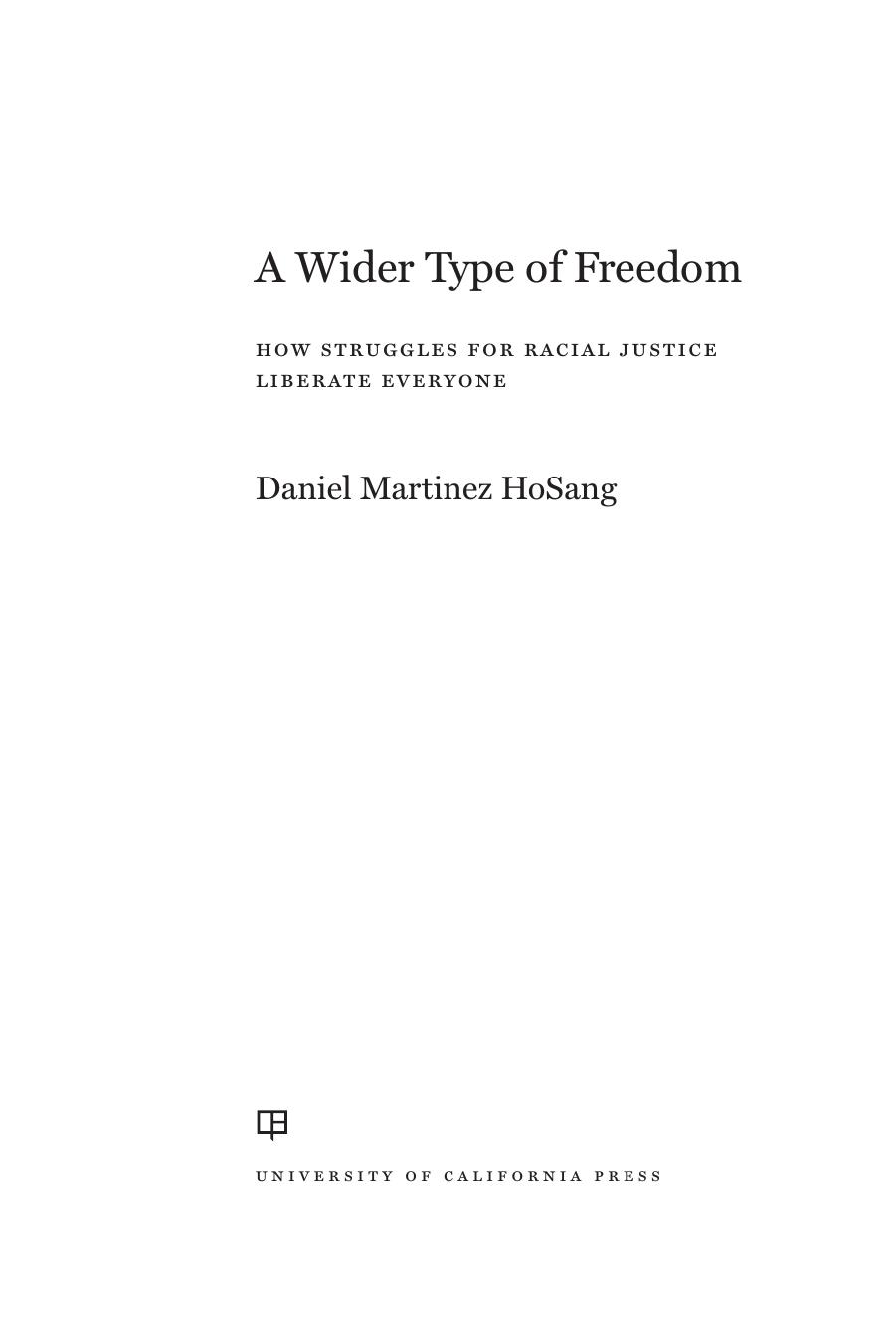A Wider Type of Freedom: How Struggles for Racial Justice Liberate Everyone by Daniel Martinez HoSang

Author:Daniel Martinez HoSang [HoSang, Daniel Martinez]
Language: eng
Format: epub, pdf
Tags: History, Social History, United States, 19th Century, 20th Century, 21st Century, Social Science, Race & Ethnic Relations, Feminism & Feminist Theory
ISBN: 9780520974197
Google: 0REzEAAAQBAJ
Goodreads: 57512272
Publisher: Univ of California Press
Published: 2021-09-21T00:00:00+00:00
PAZ PARA VIEQUES/PROTECT KAHOʻOLAWE ʻOHANA
On a spring day in 2000, two organizers named Kyle Kajihiro and âAunti Terriâ Kekoâolani boarded a small fishing boat in Vieques, Puerto Rico, some 5,300 miles away from their home in Honolulu. As for others on the boat, it was death that had brought them to this place.
A year earlier, a Marine Corps F/A 18 Hornet flew in low off the horizon and dropped two 500-pound Mk 82 bombs on this island municipality six miles east of the mainland. For the 9,500 civilian residents of Vieques, this was unremarkable. Since the mid-1940s, two-thirds of the 52-square-mile island had been controlled by the US Navy, including a 900-acre Live Impact Area (LIA) carved out of the white sand beaches and former sugar cane plantations. In the previous 15 years, US Navy pilots had dropped nearly 15,000 tons of bombs on this range, about the size of New Yorkâs Central Park. On this April day, however, the pilots missed their target, and the bombs landed near a naval observation post outside of the range. David Sanes, a 35-year-old civilian employee of the navy on patrol near the post, was knocked unconscious from the impact of the bomb, and quickly bled to death from his injuries. Sanes had been born in Vieques, and like all Puerto Rican citizens, was also a citizen of the United States. Sanes was killed by his government.
Kajihiro and Kekoâolani exited the boat on the beach abutting the range, the shoreline of eastern Puerto Rico visible a few miles away on the horizon. With others in their small delegation, they began making their way into the LIA. Immediately after Sanesâs death, a group of family, friends, and longtime activists decided to occupy the bombing range, essentially becoming human shields in order to realize their goal: âNi una bomba más.â Monte David, the encampment they built to honor Sanes, soon drew hundreds of supporters; a dozen other nearby protest camps, populated by groups of labor unions, religious communities, and political parties followed.
Kajihiro and Kekoâolani walked through a field of white wooden crosses planted in the range, moving carefully around a maze of rusting bombs, trucks, tanks, and mortar shells, the remnants of five decades of war games. The area reportedly had more craters per square mile than the surface of the moon. Kajihiro described the âshock of seeing this beautiful placeâwhite sand, blue waterâand then stepping around orange flags to mark unexploded ordinance.â The white crosses represented the casualties of the navyâs presence, not just those killed by errant bombs but also those who had died of cancer, an effect of decades of toxic exposure and pollution.
At Monte David, they were greeted by Carlos Zenon, one of the main organizers of the occupation and a leader in the Vieques Fishermenâs Association, a group that has challenged the navyâs presence for decades. Zenon glanced at the shirt Kajihiro was wearing: âProtect Kahoâolawe âOhana.â
Zenon smiled. He told he told Kajihiro, âI know your people.â In the 1970s,
Download
A Wider Type of Freedom: How Struggles for Racial Justice Liberate Everyone by Daniel Martinez HoSang.pdf
This site does not store any files on its server. We only index and link to content provided by other sites. Please contact the content providers to delete copyright contents if any and email us, we'll remove relevant links or contents immediately.
A Cultural History of Work in the Age of Empire by Victoria E. Thompson (ed.)(291)
A Rome of One's Own by Emma Southon(277)
Executive Order No. 9066: The Terrible Injustice Of 1942 by Sollace Freeman(269)
The Evidence of Things Not Seen by James Baldwin(268)
The Explorers by Amanda Bellows(246)
Respectability and Reform by Tara M. McCarthy(242)
A Wider Type of Freedom: How Struggles for Racial Justice Liberate Everyone by Daniel Martinez HoSang(220)
The Grey Eagles of Chippewa Falls by John E. Kinville(191)
Liberty's Dawn: A People's History of the Industrial Revolution by Emma Griffin(190)
Rethinking White Societies in Southern Africa by Duncan Money(188)
Letters From London by Julian Barnes(185)
The Crosswinds of Freedom by James MacGregor Burns(182)
A Troublemaker May Surprise (The Troublemaker Series Book 2) by Genta Sebastian(173)
Evolution of Slavery Through the Ages: A Comprehensive World History of Slavery by PRESS VERITY(168)
Continental Strangers by Gemunden Gerd;(160)
A Teacher's Guide to Ladies of Liberty by Cokie Roberts Amy Jurskis(159)
The Slave Ship, Memory and the Origin of Modernity by Martyn Hudson(152)
Beware the Masher by Kerry Segrave(143)
Hunger Dark Pen by Dark Pen(138)
